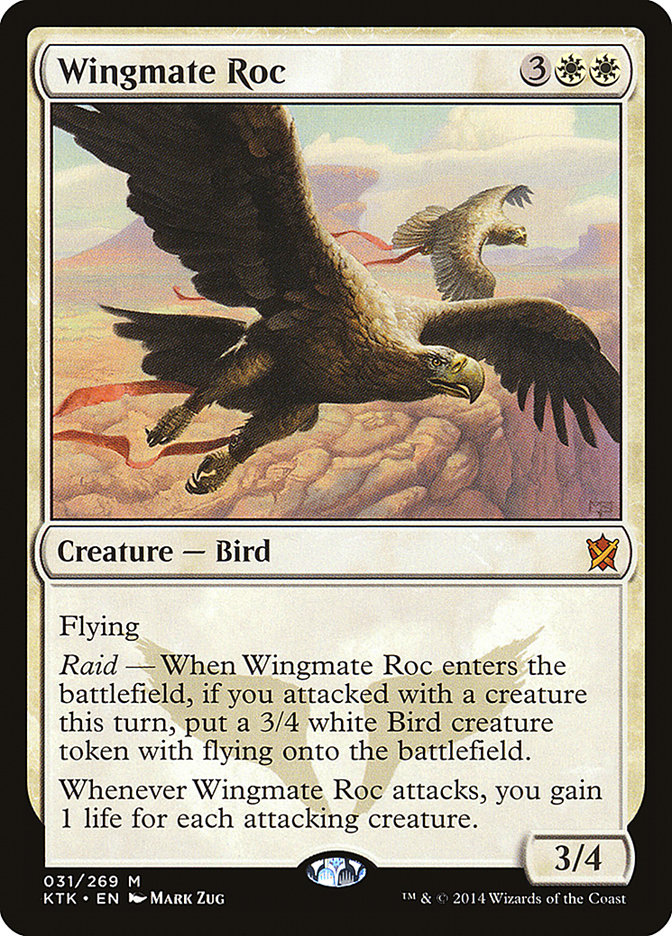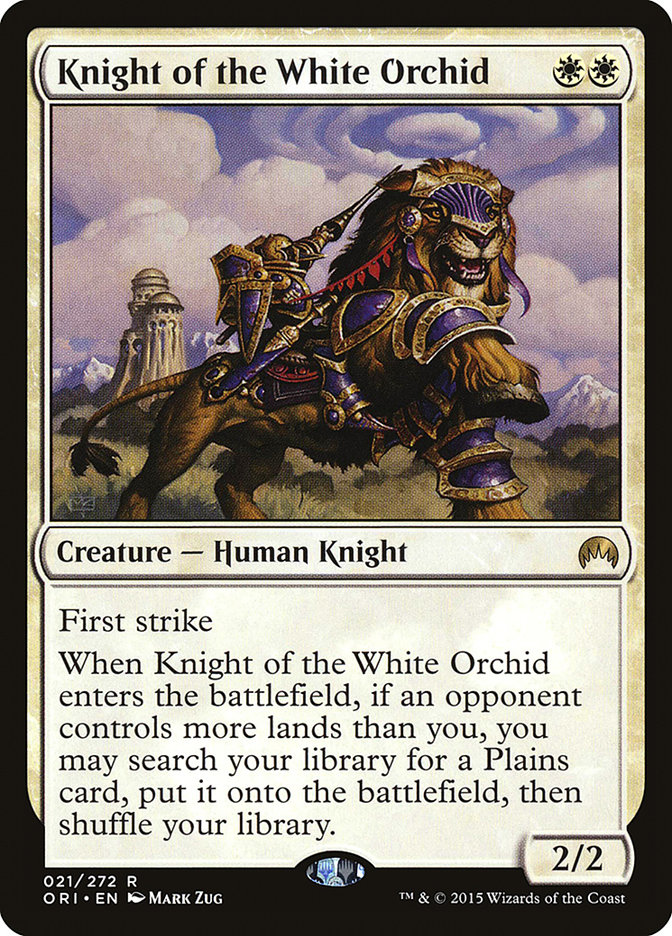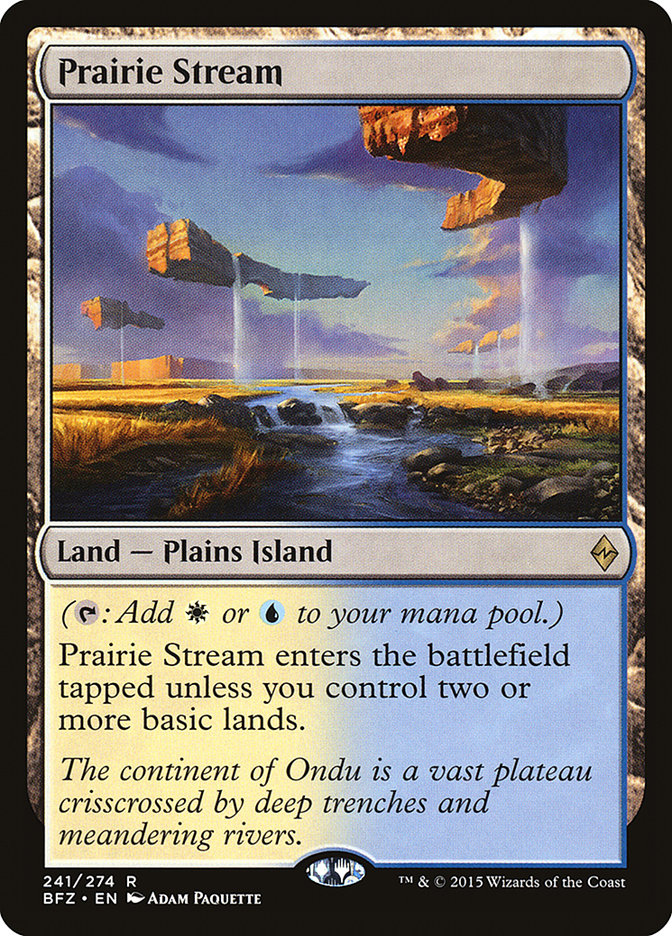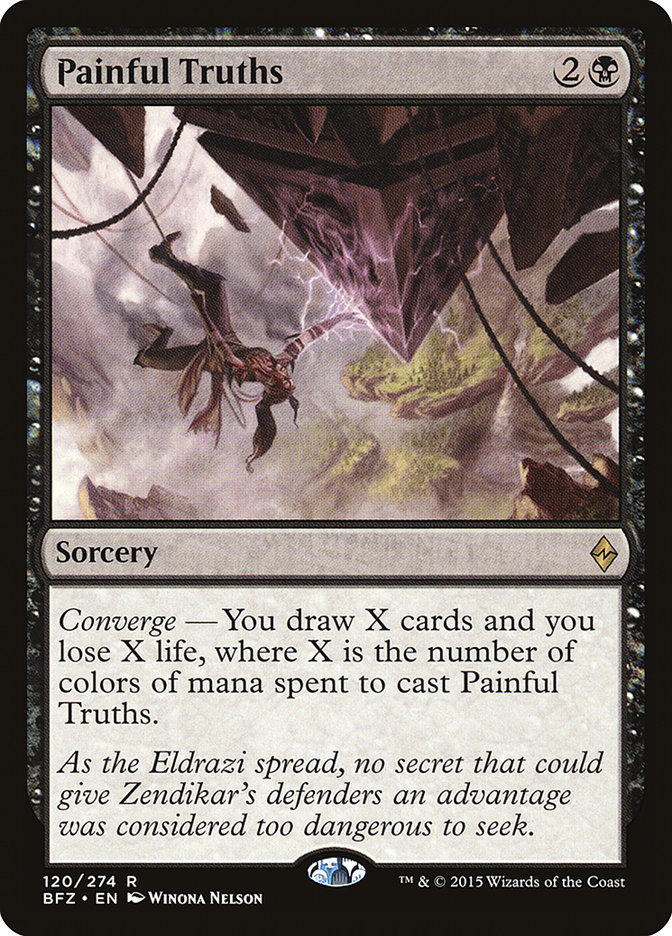Bant Megamorph is a deck that I like, but I didn’t think it would give me any substantial edge this past weekend. I’ve been a fan of the Esper Tokens deck
ever since seeing it take second place in the MOCS piloted by Fabrizio Anteri, and after playing it in a few leagues on Magic Online, I spent Friday
evening before the tournament tuning the list with Ross Merriam.
Here is what I played at Grand Prix Indianapolis:
Creatures (11)
Planeswalkers (6)
Lands (26)
Spells (17)

Why Play Esper Tokens?
One of the most pivotal aspects of Battle for Zendikar Standard is tempo. This is one of the most punishing formats in recent memory in terms of
lack of ability for a stumbling opponent to recover in the majority of matchups. More specifically, the duo of Gideon, Ally of Zendikar and Wingmate Roc
are incredibly powerful and leave little room for an opponent’s sequence to not line up properly, especially when they are curved into on the play.
These two cards are some of the best things you can do in this format dominated by white cards, and it is unsurprising that several of the top decks in the
format revolve around playing this package: G/W Megamorph, Abzan, and now Tokens.
While G/W Megamorph and Abzan are excellent aggressive decks that contain potent grindy elements, Esper Tokens is first and foremost a Gideon/Wingmate deck
that can also function as a combo deck.
First seen in Sam Black’s Bant Tokens deck, Secure the Wastes + Anthem effects can generate kills out of nowhere and is incredibly difficult to stop due to
the fact that it goes wide and can be conceived from no base with a large Secure the Wastes on an opponent’s end step and an untap into Gideon, Ally of
Zendikar or Sorin, Solemn Visitor. With the rise of decks like Eldrazi Ramp in recent weeks, a midrange deck that has the potential to maneuver around
Ugin, the Spirit Dragon and play more disruption than the green-based decks is appealing.
Bant Tokens performed admirably at the Pro Tour, but it has failed to put up any string of results since. Despite having an excellent Jeskai Black matchup,
the deck is a bit slow at times due to the fact that Retreat to Emeria isn’t guaranteed to generate immediate value and does not play well when the deck
stumbles on land drops. Further, Bant is forced to play far more narrow answers, leaving them potentially vulnerable to getting run over when their removal
doesn’t line up adequately with an opponent’s threats. All of these factors contribute to some expected difficulty with fringe decks, especially ones that
are quick to get off the ground. Eldrazi Ramp is also a nightmare.
Esper Tokens, on the other hand, gets the benefit of playing several “hard” removal spells in Murderous Cut and Utter End in addition to access to the
efficiency of Silkwrap. Knight of the White Orchid and a small blue sideboard splash is nothing new at this point, but Esper is likely the best deck to
take advantage of it. Having the ability to play a diverse disruption suite only serves to make each aspect of your deck more potent, as it is difficult to
play against discard and countermagic while also being forced to answer your opponent’s proactive axis. Further, Esper gets to virtually free-roll Painful
Truths.
Painful Truths is ridiculous, and I suspect a surge in the card’s maindeck play from anyone who can support it, like Jeskai Black, as the month’s progress.
At any point where I was able to kill an opponent’s creature they just played, and untapped into a draw three, it felt very difficult to lose.
In short, Esper Tokens plays some of the best threats, the best removal, and has access to a diverse and customizable disruption suite.
Tuning the Deck
Here’s where we started:
Creatures (10)
Planeswalkers (8)
Lands (26)
Spells (16)

You’ll notice, of course, that we didn’t make any major overhauls to the maindeck, as it was already well built. Undoubtedly, Anteri’s experience at the
Pro Tour with a similar archetype gave him a good base of experience to work off of.
That being said, after playing just a few games, there were some apparent issues to me. First, playing just two copies of Wingmate Rocs was criminal, and
it wasn’t until deep into the night that I was convinced to keep an Ob Nixilis and not just play the full four. It’s unclear to me which of these is
actually correct, but the point is that Wingmate Roc is an integral part of your deck and the best card against Jeskai Black.
Speaking of Ob Nixilis, I didn’t like the double black cards in general, as they could be difficult to cast on curve, and the deck is heavily incentivized
to fetch white sources for Knight of the White Orchid early. Ruinous Path was an easy cut, and shaving an Ob Nixilis for a Wingmate Roc made plenty of
sense for the aforementioned reasons and for keeping the curve of the deck intact.
After cutting Ruinous Path, it was logical to include another removal spell, and for a long time that was a second copy of Utter End. It didn’t really make
sense to play two copies of a removal spell that is so clunky, however, as there is little upside to drawing the second. A single copy of Quarantine Field
was included as it can have dramatic effects on a game going late, or simply serve as an analog for Utter End early. It overperformed and was one of my
only outs to get back into the game in several different spots over the course of the tournament.
We also shaved a Sorin, Solemn Visitor. This may appear strange since it is another effect to pump tokens, but the fact of the matter is that Sorin is
rather weak compared to the rest of the options available in Standard right now.
In a similar sense to Gideon, Sorin plays very poorly from behind, but with two less loyalty after making a token, he is far more vulnerable. Crackling
Doom is also incredibly effective against him. In reality, Sorin is only powerful when you already have substantial board presence and you are in racing
scenarios, where he can easily put you completely out of reach, or for specifically pairing with Secure the Wastes to facilitate a combo finish. I
frequently sideboard him out on the draw and would basically never want a second copy in the majority of games.
Besides making some slight adjustments to the mana to reflect the decline in BB spells and to increase our number of blue sources, the only other notable
change in the maindeck is the inclusion of Duress. Duress is a card that I simply want in the majority of matchups right now. It breaks up curves since so
many threats in the format are planeswalkers, clears the coast for Wingmate Rocs against Ojutai’s Command, and can be proactive insurance against Atarka
Red’s combo elements or Eldrazi Ramp’s mana development.
This also had the added benefit of freeing up a lot of space in our sideboard.
Before I discuss the sideboard, I should mention that the only net-negative change we made is the trimming of the third Murderous Cut. I don’t exactly know
why I supported this, but it was a mistake. The deck can play a third delve spell, especially with the Duress inclusion, and having a removal spell without
bias is excellent. Oops.
Sideboarding
The four major targets we had in mind for constructing our sideboard were Eldrazi Ramp, Jeskai Black, Abzan, and Atarka Red.
A huge emphasis of playing a deck with Knight of the White Orchid in it is adjusting for being on the play or draw. While there are some matchups where
Knight is universally good for its stats (Atarka Red), or always being online (Eldrazi Ramp), you will often be shaving them on the play.
VS Jeskai Black
Out (on the play):
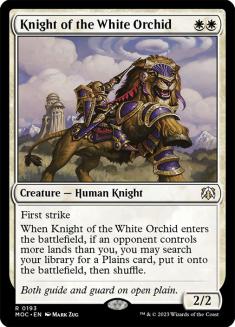

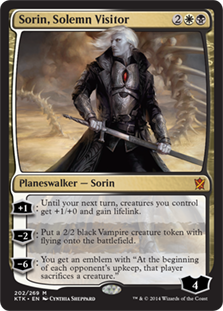
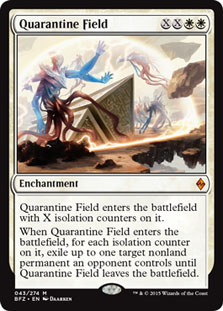

In (on the play):
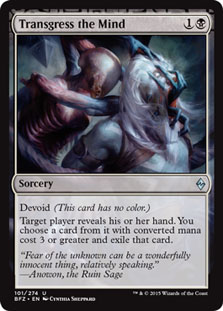
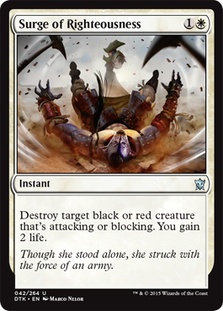

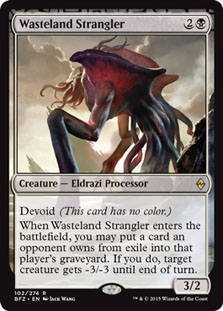

Out (on the draw):

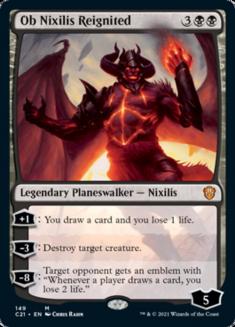
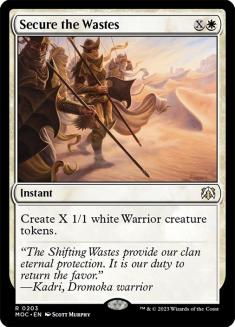

In (on the draw):




I hate to admit it, but I never got completely comfortable with sideboarding in this matchup. More than any other, you will be forced to adjust based on
how your opponent plays and configures their deck. I’ve had Jeskai Black opponents shave on their Mantis Riders, encouraging less emphasis on Surge and
more on lategame cards like Negate. Similarly, if your opponent shows a lot of respect with their Tasigurs, never attacking and only drawing cards, Surge
gets a lot worse.
In the same vein, depending on how your opponent’s deck is built will dramatically influence the games after sideboard. If they are boarding into Painful
Truths, more counterspells, and Exert Influence, then you are likely hard pressed to win a traditional lategame full of trading and will probably need to
lean more on “combo-killing” them with Secure the Wastes and a planeswalker. If they are more interested in playing a tempo game with Mantis Rider, then
your removal and Ob Nixilis will be great, and you can try to grind them out with your own Painful Truths.
The flexibility that Jeskai Black has in terms of how to play the games and its deck configuration is the reason that it is considered the best deck.
Beating it is all about having awareness towards your opponent and demonstrating fluidity in both playing and sideboarding.
VS Eldrazi Ramp
Out:
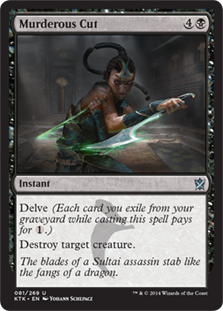


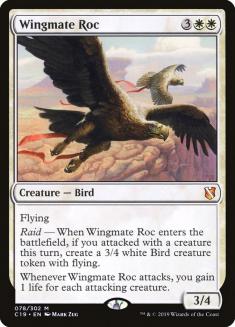



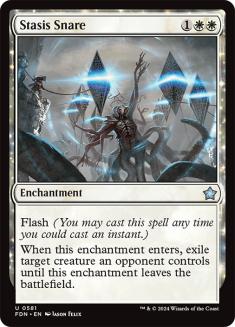
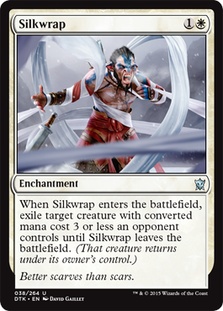


In:





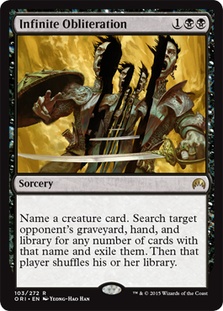

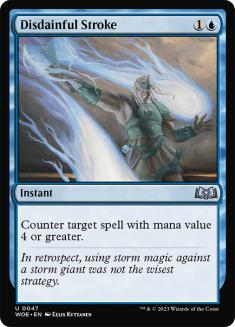

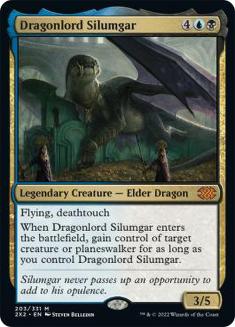

For the most, part you always want to be doing the same thing in this matchup after sideboard, with perhaps some deviation towards more removal spells if
your opponent is playing something like Whisperwood Elemental.
Wingmate Roc is slow and usually lines up just on time with your opponent’s Ugin, making it difficult to even get a full hit in. While Hangarback Walker
would appear on paper to be too anemic of a threat to be effective in this matchup, the fact that it comes down early, is colorless to defend against Ugin,
and plays fairly well with counterspells make it an important part of your offense.
For the most part, unless you get to play a quick Gideon, Ally of Zendikar and just get aggressive, you’ll be trying to set up a Secure kill as they have
little means to defend against it.
VS Atarka Red
Out:







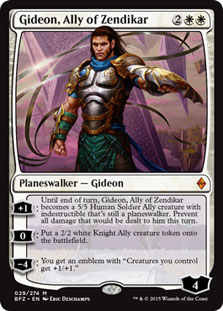
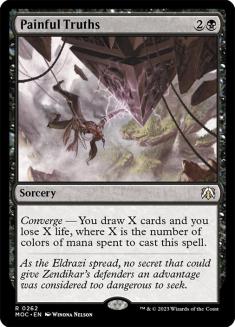


In:
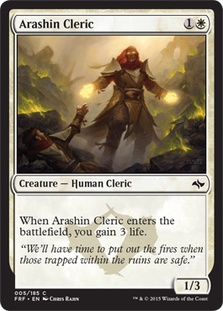










Again, but for different reasons, Wingmate Roc is not that effective against Atarka Red. Two of the big ways they will attempt to beat you is by either
going wide, or combo killing you with Become Immense + Temur Battle Rage. As a result, it is not appealing to tap out at any early stage of the game,
rather you want to become an aggro-control deck and sit behind your counterspells and interaction while deploying your efficient two-drops. Ultimately, you
will be building up to a Secure the Wastes to trump their wide plan, although it is critical that you have a means to defend from or have already baited
out their Atarka’s Command before you do so.
While it may appear strange to also sideboard out Sorin and a copy of Gideon, it is dangerous to play these on turn 4. Sorin, in particular, doesn’t have a
strong impact on the game until you are able to play a big Secure the Wastes, as you are incentivized to block aggressively. It is also actually quite
difficult to get out of range of Atarka Red due to how much raw damage their combo can deal without interaction.
VS Abzan
Out (on the play):






In (on the play):






Out (on the draw):
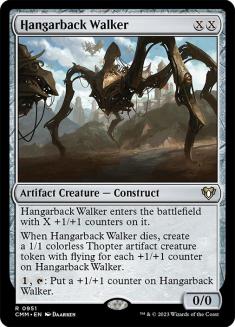






In:







This matchup is basically about not dying. Any curve involving Hangarback Walker into Anafenza and Siege Rhino is incredibly scary, but Surge of
Righteousness is surprisingly effective against Abzan. It can be difficult to keep parity on the board and also avoid dying to Wingmate Roc, but that’s
more or less why Abzan keeps winning. If you are able to successfully kill all their creatures, you do have the superior lategame.
Secure the Wastes is far less effective in this matchup, as a few 1/1s don’t line up well at all against Abzan’s massive creatures. As a result, it is more
of a lategame punch or a means to buy time, rather than a plan you are leaning on.
Before closing this week, I want to touch on one of the most important and unintuitive aspects of Esper Tokens.
Playing With Gideon
Gideon, Ally of Zendikar is not an easy card to play with in any deck, but his role is critical in Esper Tokens. While the vast majority of decks are happy
to make a Knight Ally with Gideon, allow him to take some damage, and get to untap with the planeswalker at the ready, Esper rarely wants this to happen.
Creating an emblem is so powerful in a deck with Secure the Wastes, Hangarback Walker, Wingmate Roc, and Shambling Vent that you want to be very aggressive
on pulling the trigger on Gideon’s emblem ability, even if Secure the Wastes isn’t in your hand. There will frequently be times where you are playing Magic
with your head just above water simply waiting to draw a Secure the Wastes and kill your opponent in one attack, and just making a couple of Knights and
dealing five damage with your Gideon ultimately won’t allow that.
Similarly, a huge portion of winning Wingmate Roc wars is being the first with an emblem in play. If you can ever force your opponent to double block one
of your birds with both of theirs and walk them into a trick, the result is often game-winning.
Granted, Gideon is still an excellent piece of board position, and on most stable states you will simply be making a Knight Ally, but the point I’m trying
to make is that defending Gideon’s full four loyalty is vital, and pulling the trigger on his Glorious Anthem emblem will win you a lot of games.
On a similar note, in an effort to defend Gideon or to put quick pressure on an opponent like Eldrazi Ramp when you have Gideon on curve, an early Secure
the Wastes can be a great play. Don’t be afraid to play Secure for two to set up for your planeswalker!
While (for me) both Modern and Standard are down, I still have Legacy to go this weekend in Seattle. While it’s still not clear to me what I will be
playing in that tournament, I do know that Esper Tokens is an excellent choice for anyone attending #SCGPHILLY.



